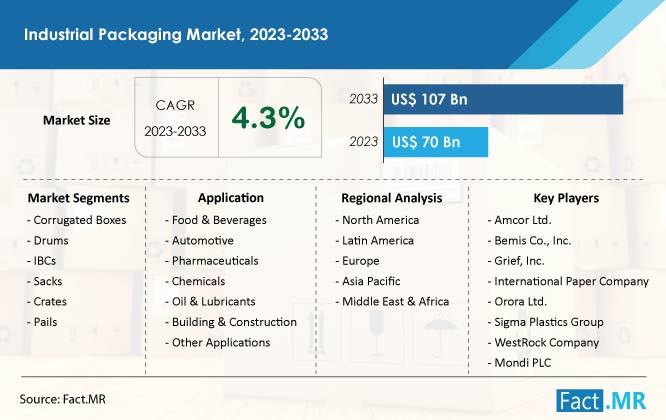Bulk Container Recycling Initiatives: Sustainably Navigating Sector
Bulk Container Recycling Initiatives: Sustainably Navigating Sector
Blog Article
Effective Industrial Recycling Solutions for Sustainable Packaging: A Comprehensive Overview
That's where this thorough overview on effective commercial recycling options for lasting product packaging comes in. By exploring vital locations such as product packaging material option, creating for recyclability, applying reusing facilities, teaming up with reusing partners, and monitoring and determining recycling success, this overview will certainly outfit you with the understanding and devices necessary to make educated decisions and drive positive adjustment within your organization. Whether you're a product packaging expert, sustainability supervisor, or just interested in the topic, this overview will offer useful insights and techniques to aid you browse the globe of lasting packaging.
Packaging Product Option
The choice of product packaging materials plays a crucial function in making sure the sustainability of commercial recycling options. The option of materials is crucial in minimizing ecological effect and making the most of reusing performance when it comes to sustainable packaging. Choosing the ideal materials can help in reducing waste generation, conserve resources, and advertise a circular economy.
One crucial variable to take into consideration in product packaging material choice is recyclability - processing company. Materials that can be easily recycled and integrated back right into the production cycle are preferred. For instance, materials like cardboard, paper, glass, and specific sorts of plastics can be reused multiple times without losing their high quality. On the other hand, materials that are tough to reuse, such as mixed plastics or non-recyclable compounds, can produce obstacles for the reusing process and may wind up in burners or garbage dumps.
One more factor to consider is making use of eco-friendly and naturally degradable products. Packaging made from renewable energies, such as plant-based plastics or biopolymers, can help in reducing dependency on fossil fuels and alleviate environment adjustment. Furthermore, biodegradable products damage down naturally over time, minimizing the buildup of waste in land fills.
Additionally, the weight and volume of packaging products ought to be reduced to minimize transport prices and power consumption. Light-weight materials not only call for less resources throughout production but also contribute to lower carbon emissions during transportation.
Designing for Recyclability
In order to guarantee the recyclability of product packaging products, thoughtful layout is crucial. Creating for recyclability includes producing product packaging that can be quickly arranged, separated, and processed in recycling facilities. One important aspect of designing for recyclability is the selection of materials. Packaging developers ought to prioritize making use of materials that are commonly approved for recycling and have actually developed recycling infrastructures. Products such as glass, light weight aluminum, and specific kinds of plastic, like family pet and HDPE, are frequently reused and ought to be liked over products that are pricey or challenging to recycle.
Another crucial factor to consider in creating for recyclability is the removal of unnecessary components or products. By minimizing the number of layers, layers, and added parts, product packaging can be made easier and easier to reuse. Additionally, developers need to intend to decrease the use of combined products, as they can complicate the recycling procedure.

Implementing Recycling Framework
Efficient application of recycling infrastructure is critical for the success of industrial recycling solutions. Without correct facilities in position, the reusing process becomes inefficient and ineffective, impeding the total objective of lasting product packaging.
To implement reusing infrastructure efficiently, several key variables need to be taken into consideration. To start with, there must be an efficient collection system that helps with the separation and collection of recyclable materials. This can include designated recycling containers in public areas, along with collaborations with waste administration firms for curbside pick-up and sorting.
Once collected, the recyclable materials require to be carried to view reusing centers in a timely fashion. This needs efficient logistics and transport networks, ensuring that the products reach the appropriate facilities immediately.
At the reusing centers, advanced sorting and processing modern technologies need to be in area to divide various kinds of products properly. This consists of using automated arranging makers, optical scanners, and hand-operated sorting strategies.
Additionally, there must be a robust market need for recycled materials. This can be achieved through collaborations with makers and sectors that make use of recycled materials in their production processes. Developing a secure market for recycled materials incentivizes the reusing market and advertises the circular economic situation.
Working Together With Recycling Allies

One trick facet of teaming up with recycling partners is the establishment of clear communication channels. It is essential to establish open lines of communication to facilitate the exchange of info, updates, and feedback. This enables both parties to stay informed concerning the development of recycling campaigns and address any browse around here type of obstacles or problems that may develop.
Additionally, collaboration can entail collaborations in creating and applying reusing programs. Recycling partners can offer valuable understandings and guidance in establishing efficient collection systems and establishing one of the most appropriate recycling innovations. By collaborating, organizations and recycling companions can enhance the recycling procedure and lessen waste.
Additionally, collaboration can expand past the operational aspects of reusing. It can also encompass campaigning for and education and learning initiatives. By joining forces, businesses and reusing partners can elevate understanding about the importance of recycling and advertise the fostering of sustainable product packaging practices amongst consumers and various other stakeholders.
Tracking and Measuring Recycling Success
To guarantee the effectiveness of commercial recycling remedies and the success of sustainable product packaging objectives, it is crucial for organizations and their recycling partners to establish a detailed system for monitoring and measuring reusing success (industrial metal packaging). Tracking and measuring reusing success enables businesses to evaluate the effect of industrial packaging solutions their reusing initiatives, identify areas for improvement, and set meaningful targets for future progression
One means to track recycling success is via the usage of data collection and analysis devices. By gathering information on the quantity of product packaging waste produced, the percentage of waste that is recycled, and the kinds of products being reused, companies can get useful understandings right into their reusing performance. This data can after that be evaluated to identify trends, patterns, and locations of inefficiency.
An additional essential aspect of monitoring and determining recycling success is developing standard and clear metrics. This allows organizations to contrast their performance against sector standards and track their progression with time. Metrics such as reusing rates, waste diversion prices, and greenhouse gas exhausts can give a quantitative procedure of an organization's reusing success.

Final Thought
Finally, carrying out effective industrial recycling options for lasting product packaging calls for cautious factor to consider of packaging material choice, developing for recyclability, applying recycling framework, teaming up with reusing companions, and monitoring and determining reusing success. By including these practices, companies can add to a much more lasting and environmentally-friendly technique to product packaging, minimizing waste and promoting the round economic situation.
By exploring key locations such as product packaging product option, designing for recyclability, applying recycling framework, working together with recycling partners, and tracking and gauging recycling success, this guide will certainly equip you with the understanding and tools necessary to make enlightened choices and drive positive change within your organization. Product packaging developers must focus on the use of materials that are commonly approved for reusing and have established reusing frameworks.Partnership with recycling partners is important for the successful execution of industrial recycling services and the success of lasting packaging goals. By joining forces, businesses and reusing partners can raise recognition about the significance of recycling and advertise the fostering of lasting product packaging techniques amongst customers and other stakeholders.
By collecting data on the amount of packaging waste produced, the portion of waste that is recycled, and the types of materials being recycled, services can get beneficial understandings into their recycling performance.
Report this page